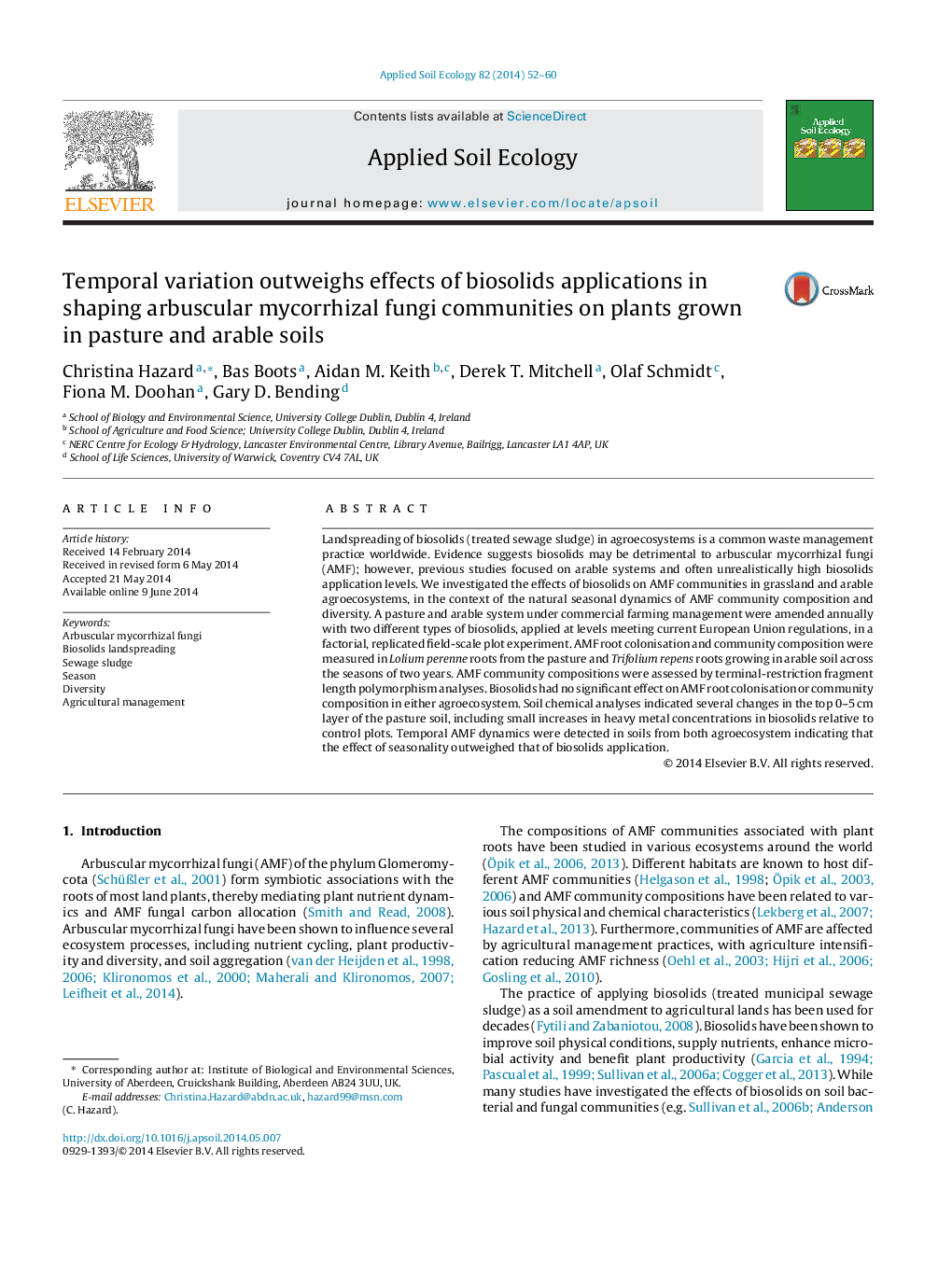| Article ID | Journal | Published Year | Pages | File Type |
|---|---|---|---|---|
| 4382150 | Applied Soil Ecology | 2014 | 9 Pages |
Abstract
Landspreading of biosolids (treated sewage sludge) in agroecosystems is a common waste management practice worldwide. Evidence suggests biosolids may be detrimental to arbuscular mycorrhizal fungi (AMF); however, previous studies focused on arable systems and often unrealistically high biosolids application levels. We investigated the effects of biosolids on AMF communities in grassland and arable agroecosystems, in the context of the natural seasonal dynamics of AMF community composition and diversity. A pasture and arable system under commercial farming management were amended annually with two different types of biosolids, applied at levels meeting current European Union regulations, in a factorial, replicated field-scale plot experiment. AMF root colonisation and community composition were measured in Lolium perenne roots from the pasture and Trifolium repens roots growing in arable soil across the seasons of two years. AMF community compositions were assessed by terminal-restriction fragment length polymorphism analyses. Biosolids had no significant effect on AMF root colonisation or community composition in either agroecosystem. Soil chemical analyses indicated several changes in the top 0-5Â cm layer of the pasture soil, including small increases in heavy metal concentrations in biosolids relative to control plots. Temporal AMF dynamics were detected in soils from both agroecosystem indicating that the effect of seasonality outweighed that of biosolids application.
Related Topics
Life Sciences
Agricultural and Biological Sciences
Ecology, Evolution, Behavior and Systematics
Authors
Christina Hazard, Bas Boots, Aidan M. Keith, Derek T. Mitchell, Olaf Schmidt, Fiona M. Doohan, Gary D. Bending,
